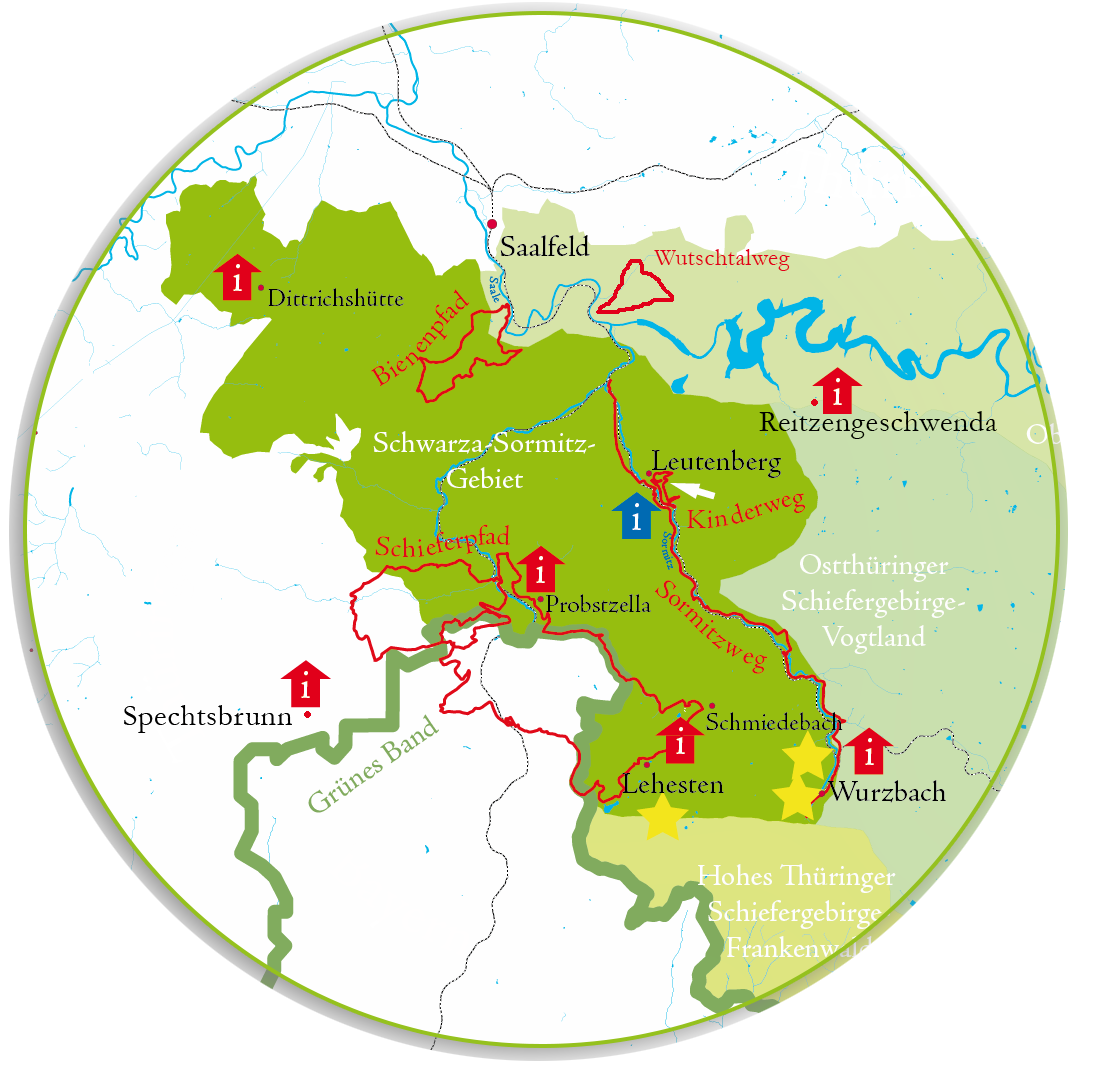Deep creek valleys, whose valley beds are used as meadows and pastures, are as characteristic of this natural area as the hilly wooded plateaus. Those interested in culture and history, as well as nature lovers, will find much here worth discovering. In the historic slate mining areas, numerous old slate quarries and pits have developed into valuable habitats over the centuries. The most significant features of the traditional slate mining in the Slate Mountain region are the slate houses, shale pits and impressive old opencast mines. One of them can be seen in the Thuringian Lehesten slate park, where a nature park exhibition plans to populate the old slate quarries with plants and animals. The lichens and fungi are a particular highlight of the Nature Park. In the many disused slate quarries, inconspicuous but rare and endangered crustose, shrubby and bearded lichens grow. Some bearded lichen is found only here, as a so-called endemic species.
Simply move the cursor over the map and follow the information behind the landmarks and hiking trails of this natural space!


Special animal species:
bats, fire salamanders, dippers, Eurasian eagle owls, boreal owls, kestrels, grass snakes, smooth snakes, common lizards, garden dormice
Special plants:
rare mosses, lichens and fungi
Landscape profile of the Federal Office for Nature Conservation
The Schwarza-Sormitz area is a relatively densely forested area, divided by close-knit valleys, to the north of the West Thuringian Slate Mountains, with narrow valleys between Wurzbach in the south-east and Gehren in the north-west. The south-western limits run along the forested border at Gross-Breitenbach. Large parts of the Schwarza and Sormitz valley systems lie within this area. The proportion of forest is relatively high, being predominantly spruce. Agricultural land covers about one third of the area, though the intemperate agricultural sites lie fallow. Potential natural vegetation can be submontane/montane fir pine forest in a complex with beech and fir forests, montane woodrush/beech forest and dry forest on hilly, south-facing slopes. As the largest protected area, over 4000 ha of the 'Northern Thuringian Slate Mountains with Schwarza Valley' EU bird sanctuary lie within this landscape. The landscape is partly within the 'Thuringian Forest' and 'Thuringian Slate Mountains' reserves. The 'Mauraer Heide' nature reserve is located to the north-east of Oberweissbach. It is an uncultivated forest area with structurally rich forests and is of great importance as a habitat for the critically endangered capercaillie. In the east of Oberweissbach is the 'Wurmbergwiese' nature reserve, a complex of mountain meadows and grasslands with many vulnerable, endangered and critically endangered plant species.